Derby - Darley Abbey
Part 2
w/e 20 April 2008
All
this week's pictures were taken with a Kodak DX6490
In the second part of three following a walk around
the Darley Fields/Darley Abbey area of Derby we continue northwards
along the western side of the River Derwent and into Darley Abbey
Park.
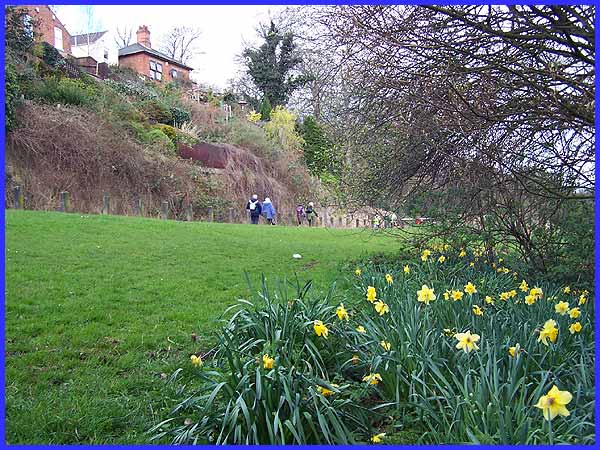
The path here along Darley Grove is fairly level but the valley
side rises steeply to the rear of the properties on Otter Street.
Their outlook over the river to Parker's Piece must be quite
something but I don't envy the inhabitants when they have to
tend to their rear gardens!
|
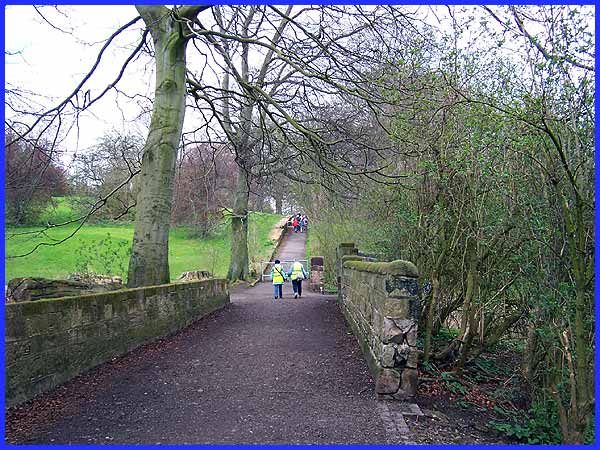
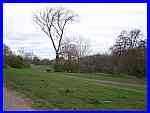 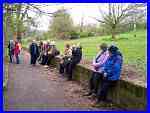 Darley Grove continues its northward trek
but deviates slightly from the line of the river where the intervening
rolling parkland is popular with people exercising their dogs
(left). This area is known as Derwent Park. Eventually the path
reaches an incline that is fairly steep at the outset but gradually
becomes a gentler slope. A low wall near the top is a convenient
resting place if the exertions prove too great (right). Darley Grove continues its northward trek
but deviates slightly from the line of the river where the intervening
rolling parkland is popular with people exercising their dogs
(left). This area is known as Derwent Park. Eventually the path
reaches an incline that is fairly steep at the outset but gradually
becomes a gentler slope. A low wall near the top is a convenient
resting place if the exertions prove too great (right).
|
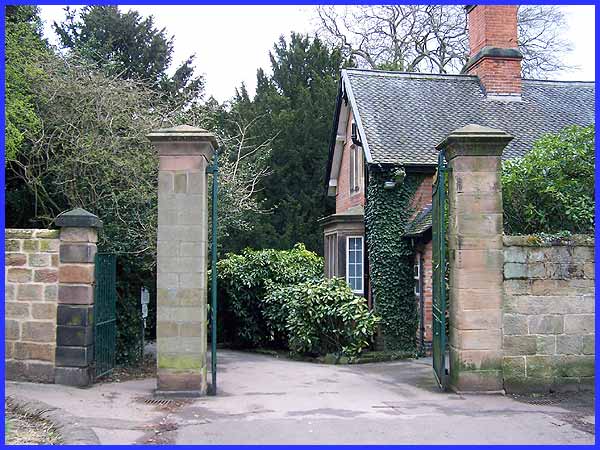
At the entrance to Darley Abbey Park, we turn right and pass
the Lodge to head down the hill again this time through the park
and back towards the river bank.
|
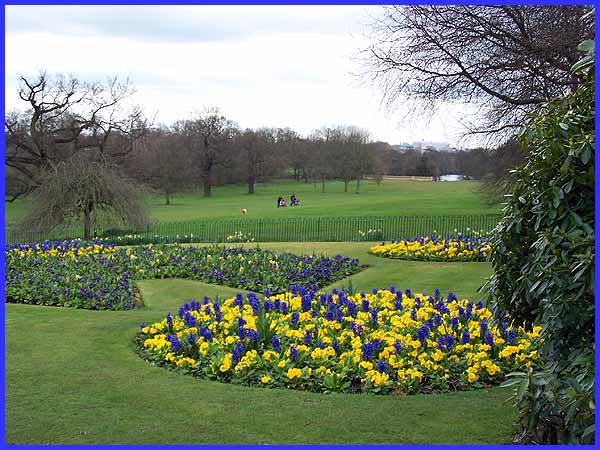
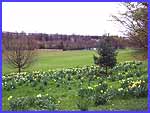 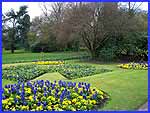 Darley Abbey Park used to be the private park
of Darley Hall but the Hall was demolished in 1962 and the site
of it is now a terraced garden. Standing on rising ground the
views from the Hall were over the parkland landscaped by William
Emes down to the river. Today attractive flower beds catch the
eye but notice in the distance the balustrade that we saw from
the other bank in Part 1. Darley Abbey Park used to be the private park
of Darley Hall but the Hall was demolished in 1962 and the site
of it is now a terraced garden. Standing on rising ground the
views from the Hall were over the parkland landscaped by William
Emes down to the river. Today attractive flower beds catch the
eye but notice in the distance the balustrade that we saw from
the other bank in Part 1.
|
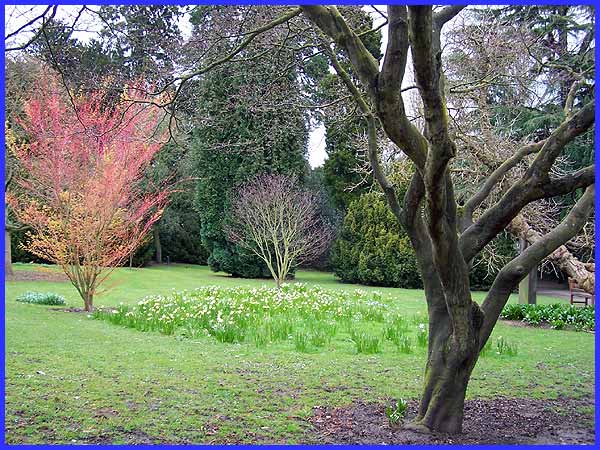
As well as the flower beds there are some lovely informal areas
within the park which was left together with the Hall to the
Derby Corporation in Mrs Ada Evans' will in 1929. The Hall was
originally built in 1727 for William Woolley, it is thought by
Smith of Warwick, but it was later extended in the 1760s by Joseph
Pickford.
|
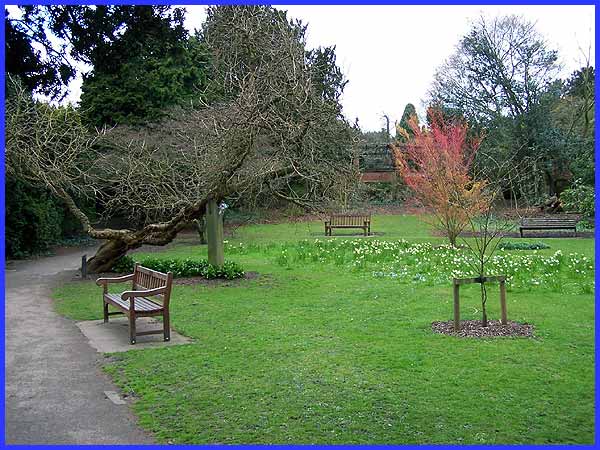
When the Hall was taken over by the Derby Corporation it was
used as a school until 1961 but the school moving out was the
signal for its demolition. Only the stable block survived but
some of the trees in the park, particularly this old one in need
of additional support on the left of the picture above must have
stood for many many years. It is good to see however young saplings
standing nearby that future generations will enjoy.
|
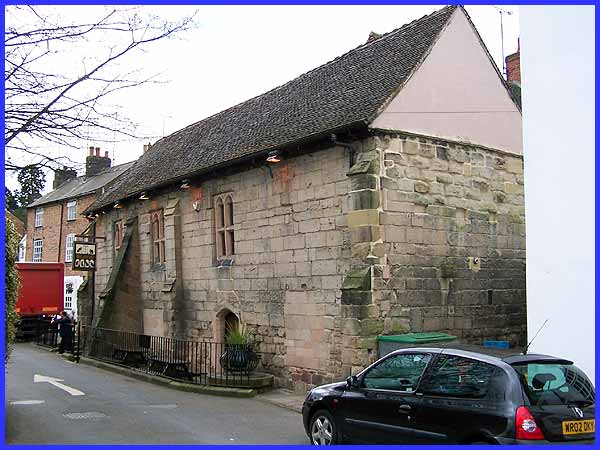
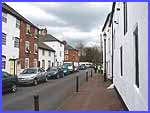 Exiting the
park we now reach what was the village of Darley Abbey. I would
have preferred to have taken the above photo from further to
the left but delivery vehicles and parked cars precluded this
option. The building in fact is the surviving part of what was
the largest monastic establishment in Derbyshire. Built about
1140 as an Augustinian Abbey it suffered at the hands of Henry
VIII and the Dissolution of Monasteries in 1538 and most of the
buildings disappeared within a couple of years. Fragments can
still be found in other buildings in the village but this surviving
building was sensitively converted in 1979/80 into the Abbey
Inn. Exiting the
park we now reach what was the village of Darley Abbey. I would
have preferred to have taken the above photo from further to
the left but delivery vehicles and parked cars precluded this
option. The building in fact is the surviving part of what was
the largest monastic establishment in Derbyshire. Built about
1140 as an Augustinian Abbey it suffered at the hands of Henry
VIII and the Dissolution of Monasteries in 1538 and most of the
buildings disappeared within a couple of years. Fragments can
still be found in other buildings in the village but this surviving
building was sensitively converted in 1979/80 into the Abbey
Inn.
|
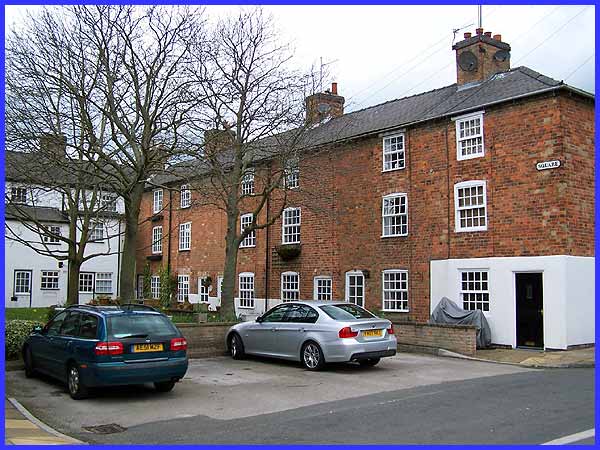
 Boar's Head Cotton
Mill mentioned in Part 1 and which we shall see in Part 3 was
founded around 1780 and much of the village of Darley Abbey was
built between 1785 and 1830 to house workers at the mill. Despite
modern day transport and telephone wires, the buildings in the
Square off Darley Street still exude an air of a bygone time.
They are now just a small part of the Darley Abbey Conservation
Area which itself since December 2001 has been part of the Derwent
Valley Mills World Heritage Site that stretches 15 miles along
the river valley from Derby in the south to Matlock Back in the
north. Boar's Head Cotton
Mill mentioned in Part 1 and which we shall see in Part 3 was
founded around 1780 and much of the village of Darley Abbey was
built between 1785 and 1830 to house workers at the mill. Despite
modern day transport and telephone wires, the buildings in the
Square off Darley Street still exude an air of a bygone time.
They are now just a small part of the Darley Abbey Conservation
Area which itself since December 2001 has been part of the Derwent
Valley Mills World Heritage Site that stretches 15 miles along
the river valley from Derby in the south to Matlock Back in the
north.
In Part 3 of this walk we will complete the walk and return to
the Rugby Club.
|

